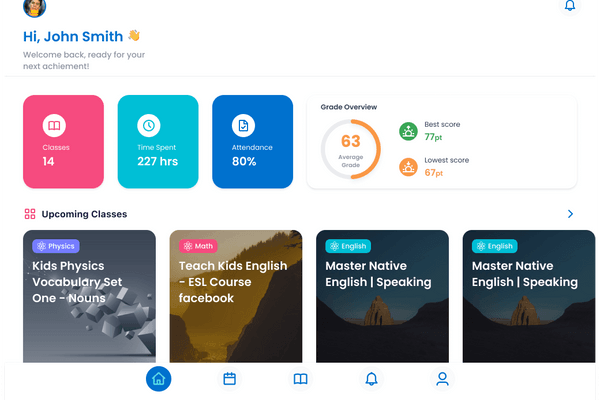Streamline your Courses: 3 Top Features of Content Management Systems (CMS)
If your team consists of content developers, instructional designers, or subject matter experts, then you might have heard the acronym CMS echoed around the workspace. A CMS is used by educational organizations around the world to develop, manage, and deliver digital learning content.

Perhaps you're reading this now because you're the proud owner, franchisor, or franchisee of megabytes of intellectual property, and you're searching for a natural home for your digital learning material. Perhaps you've explored the idea of a CMS before but were unable to see its advantages. Just like money feels safest in the bank rather than in your pocket, your digital content is best off in its natural habit, a CMS.

A CMS is worth its weight in gold. Here's why:
A Content Management System contains neat features that help establishments:
- Organize and Adapt Content
- Work Collaboratively
- Deliver Clear and Actionable Feedback
Organize and Adapt Content
"An educator's work is never done" - Anonymous.
Enrichment and learning centers have said that promoting, selling, and delivering their first course is the hardest. For educational institutions, there are many initial hurdles such as course quality, branding, and pricing they must overcome. But after all that, it's smooth sailing...or is it? Clients begin accelerating through your course content at a faster rate than you had prepared for causing you to panic create, or buy volumes of courseware and resources. Sooner or later, you'll be working with curriculums across different levels, learners, and class sizes, and even in different file formats.
It may seem daunting, but don't worry. The CMS course module editor allows you to organize, update, and revise your e-learning content efficiently. One of my favorite course categorizing tools is 'tagging', this allows you to tag a course by its topic, learning objective, or learner profiles, making it easy to identify or allocate to a learner.
With ever-changing curriculum standards, workplace law, and consumer characteristics. It can be challenging for any establishment to keep its course content fresh and relevant.
Another feature of an CMS that helps you organize and adapt content is the functionality of the cloud. A cloud-based CLMS (Cloud Learning Management System) can support and streamline any changes instantly, collaboratively, and remotely. Even an entire K-12 course with gigabytes of interactive multimedia can be stored independently on the cloud. And when it's time to edit a formative exam or add more supplementary materials for your accelerated learners, you can access your asset library, highlight, or insert efficiently.
It's never been easier to redesign or repurpose existing content, and a decorated Content Management System will effortlessly allow you and your team to give existing courses a touch-up or a total makeover.
Work Collaboratively
"This is a job for the A-Team" – Col. John 'Hannibal' Smith

When your courses are starting to sell like hotcakes, you'll want to scale your business and have other companies use your content. Sooner or later your CMS will play host to another CEO, and it's important to impress while you're showcasing your CMS. After you've successfully demonstrated how to use your system you may have to onboard new members of a team and work even more collaboratively than before.
A sophisticated CMS allows admin, teachers, and learners to have unique log-ins, with specific functionalities. Management has a clear overview of all the enrichment center's active courses, while the admin can monitor, allocate, and gain detailed course insights such as course progression, assessment results, user engagement, and student satisfaction. An CMSs vivid interface gives users clarity so that everyone can work as collaboratively.

Deliver Clear and Actionable Feedback
“Clear feedback is the cornerstone of improvement’ - David Brailsford
After all your digital content is laid bare for all to use, it'll inevitably begin to receive feedback from other team members or professionals.
To make swift changes that'll impact your learners efficiently you'll want feedback to be funneled down through the team fast. A CMS provides tools that assist feedback, employees can leave messages publicly or privately on courses, curriculums, and comment on day-to-day progress. An advanced collaborative learning platform allows team members to leave constructive feedback, give suggestions, and drop links to each other, creating a positive flow of communicative feedback.
Final Thoughts
A CMS helps to streamline the process of content creation, course management, and delivery, resulting in more efficient and effective digital learning experiences for clients. More delightful learning experiences give your product, and your digital courses more value.
Find a new home with your hard work with OOOLAB.
OOOLAB has the ultimate LCMS system.

OOOLAB has developed LearningOS, an enterprise level content management system that benefits ALL education teams and learning and development specialists. This CMS uses low-code software with high functionality, so you can easily organize and adapt your content while working collaboratively and directly with your team.
Fancy integrating this awesome CMS into your enterprise?
Click here to talk to a Solutions Consultant, or Book a Demo.
Wondering if you can put your companies name on it, the answer is yes. LearningOS can even be white-labeled. Find out more about white-labeling in this blog.






